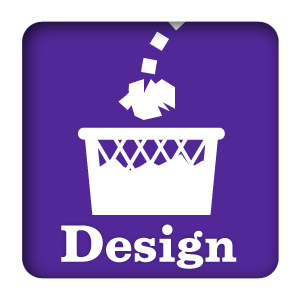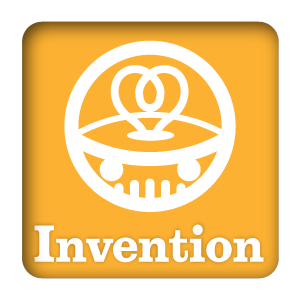The prediction: An upcoming revision of the iPad will feature a retina-quality display, use a new “A6” processor, use an SSD drive, run Siri and work with a stylus. It will sell for no less than $1000. It will be announced and sold by April of 2012.
iPad: Just a Big iPod Touch!
For those who track Apple closely, the announcement of the iPad in 2009 wasn’t a shock. In the months leading up to the announcement, many anticipated there was a tablet or slate product about to be released. Remember the term “Slate?” Ah, memories. For those of us who long anticipated an Apple-branded tablet, though, the product was a disappointment in unexpected ways.
At a consumer level, the iPad is an unqualified success. It’s writing a new chapter of computer history called the Post-PC Era. Myself, I’ve been overjoyed with my purchase of an iPad 2 and use it constantly. I’m typing this piece on it, as a matter of fact.
Still, from what I wanted from Apple, the iPad was less than what I was hoping for. I was not asking for the moon, though. I was hoping for, and expecting, a little bit of versatility. The iPad and iPad 2 certainly delivered on a lot of what one could ever hope for in a tablet, but it was, believe it or not, less that what Apple could have delivered. Because what I wanted was a graphics tablet, suitable for drawing, artwork and other creative pursuits. That’s why I’m so heavily invested in Apple. Working on the premise that I wasn’t alone in my disappointment, I also assume Apple had loftier goals for the iPad that they have yet to meet.
The Creative iPad
As has been talked about in the media, the iPad excels at being a content consumption device, yet is still a natural tool for creatives. However, creating rich content on it has proven difficult. So a bit of a gap between what creatives want and their desire to use the product has opened up.
There are many fantastic examples of content creation on the iPad, but when compared to the intense creative use of Macs, the iPad is still far behind. Apple has long been the choice of creative professionals, and the transition to post-pc devices cannot leave this important segment behind. For the same reasons that Apple is involved in the creative or “pro-sumer” market today, the same reasons will apply tomorrow.
Apple should be looking for a way to bridge creatives from Mac OS X to iOS and expand the capabilities of the iPad platform beyond the needs of the average consumer. They now need to establish a “pro” solution for creative professionals who love the iPad. To do so, you have to address the needs of these users. These are the main creative activities that need pro attention:
- Video Editing
- Audio Editing & Recording
- Photography
- Industrial Design
- Graphic Design & Artwork
- Writing
To substitute popular “pro” Mac applications for that list, it becomes:
- Final Cut
- Logic
- Aperture
- AutoCAD
- Adobe Creative Suite
- Microsoft Office
You could also use ProTools, Avid, Adobe Premiere, iWork, Photoshop, Lightroom, InDesign and others in this list.
What keeps the iPad from being this type of solution? There are four principal problems: power, capacity, display and input. That sounds like a lot, but the hard parts are the ones Apple has already gotten right: interface, operating system and form factor. Not to mention a solid customer base and customers who are very excited about using these new devices.
For the iPad, it doesn’t have the power you need to process pro video or store it. The same with audio. It can’t display video and photos at a high enough resolution, and fine detailed artwork needs as high a resolution as possible. It can’t take precise screen input for artwork. It’s also clumsy to type on, compared to a desktop.
Processor Power
Processing power is the next hurdle for Apple in developing iOS hardware. A creative iPad will need a new class of processor, likely this will be an “A6”. They’ve been extremely clever in using low power processors and smart power management to get maximum life out of iOS devices. Now, they’ve got the challenge of getting more computing power out of these same sort of devices. That means a creative tablet will be thicker. It’s unavoidable at this point in technology. It won’t be Dell-thick, but certainly will be a little bit heftier to accommodate modest cooling and larger batteries.
Capacity
As for capacity, the data storage of iPads isn’t as big a deal as it used to be, thanks to iCloud. With iCloud storage, no longer do you need large capacities to store your music, and photos, and this will eventually include almost all documents of every variety. However, for creatives, they need larger storage solutions on par with a MacBook Air at the very least. Video and audio editing will demand minimum storage capacities starting at 64GB. This will also be a prime reason that the price of this creative iPad will shoot past previous iPads and go to the portable-PC price range.
Processor power and capacity are two aspects of iPad design that are big challenges. Putting processing power back into the iPad after years and years of cleverly cutting it out is not a trivial change for the engineers. To keep battery life and pump up storage and CPU power may result in some design compromises.
Stylus
The thing the iPad was born to be was a graphics tablet. It’s already most of the way there. What it lacks, principally, is a more precise input than just a finger. That’s where a stylus comes in to the design. A finger cannot be used the same way a pen or stylus can, to input sensitivity and pressure. The way the electronics work in Apple’s current touch devices has made the creation of a true stylus impossible, keeping the iPad from being a true graphics tablet. A creative iPad would have to allow for a stylus-type device to be used for those who need the drawing or painting capabilities of brushes, pens, pencils and other physical tools.
“A stylus? But Steve said …” Yes, a stylus is the wrong choice for UI design. But for creatives, it’s an essential. You can’t accurately draw, paint or manipulate with a finger. Though I would take bets that whatever Apple creates to use as a brush or pen they would not actually call a ‘Stylus.’
Display
The second thing an iPad needs to be a graphics tablet is detail. It needs visual detail more precise than the current screen, so it needs a retina-quality display. It needs a display that effectively negates the concept of pixels and resolution.
Many people have assumed the next iPad will go with a retina display because it’s a natural upgrade. That’s not the way Apple generally thinks. Apple doesn’t do “the obvious thing” for the sake of doing it. A retina display is not necessary to the current iPad. It would not measurably improve the product, would it? So what would make a retina display a necessary component of an iPad? Creative demands.
A retina display takes more power, it’s more expensive, and the technology is new enough to have technical issues that may need a lot of massaging. A retina display would be included on a creative iPad only because it’s absolutely necessary to the device.
This will also demand a thicker screen. A precise input needs a little more depth to it than finger input. Look at the Cintique for comparison. I’m sure Apple’s engineers can beat Wacom’s for making the product thinner, but I don’t think they can match the current iPad 2.
Typing
The last issue is typing. The clumsy typing on an iPad can be solved by voice dictation. By the time this iPad is ready for the streets, the beta tag on Siri should be lifted, and make voice dictation a realistic solution for writers.
When you use voice dictation, one of the biggest nuisances is that errors are bound to happen, and you have to wait until you’ve finished a thought or sentence to fix it. With the touch control of the iPad, when an error occurs, it couldn’t be easier to quickly tap on the word, correct it, and move on. It’s actually a near ideal way to write, creating a superior experience to typing.
And Maybe…
To make iPads a better solution for use in the field, Apple may look for a way to integrate with still and movie cameras. They may put an SD slot in the creative iPad or they may offer something akin to a wifi memory card, like the Eye-Fi. Otherwise, the current “camera connector” (aka USB port add-on) would have to be used.
Could a Thunderbolt port go into an iPad? Not without 10W of power, if I understand the copper-connection Thunderbolt spec correctly. So maybe as part of a charger, it would be possible. Or if it was optical, it wouldn’t demand as much power. But this may be far too much to expect.
The Final Product
Let’s revisit the creative needs again, and how they get addressed with this proposed creative iPad:
- Video: Faster processor for video effects & editing, finer visual resolution, storage. Video transfer could be USB, Thunderbolt or wifi.
- Audio: Faster processor for audio effects & editing, storage.
- Photography: Faster processor for photo editing & correction, finer visual resolution, storage.
- Industrial Design: Greater control through styluses, fine visual resolution.
- Art & Graphic Design: Greater control through styluses, fine visual resolution, storage.
- Writing: Voice dictation.
So what we’ve defined is a product that’s faster and has more storage, but needs more battery. We’ve defined a product that needs finer input, but needs a thicker screen. These are natural trade-offs for a more powerful product.
This is also why I think the number of reports out of China that claim the “iPad 3” will be thicker indicates that Apple is working on delivering a creative iPad. Making a product ticker and thus heavier, isn’t what Apple does. They can’t stand thick and heavy. Everything in the design aesthetic goes against it. They break out in hives at the thought. So if they are about to produce such a product, they would have to have a darn good reason to do it, and an industrial-strength iPad would be a likely reason.
This also leads to the thought that an “iPad 3” and a “Creative iPad” would be two different products. An iPad 3 may be an evolutionary upgrade to the iPad 2, while an “iPad Pro” would be a different, new, product.










